
English Blogs
"Let's Learn, Explore, and Connect to the World"

Future Simple Tense 3
- Tokita Akira
- Basic English Grammar Blog

III. Uses of the Future Simple Tense
The future simple tense, formed with ‘will‘, is versatile and serves various functions in English. Understanding its applications is crucial for accurately conveying future intentions and predictions.
Expressing Future Actions and Decisions
The future simple is primarily used to talk about actions or events that will happen in the future. It is particularly useful for decisions made at the moment of speaking.
Examples:

I will go to the gym after work.

She will buy a new car next month.
Making Predictions About the Future
This tense is often used to make predictions about the future, especially when the speaker believes something will happen based on intuition or evidence.
Examples:

It will rain tomorrow.

The economy will recover next year.
Offering Promises, Threats, and Voluntary Actions
The future simple can be used to offer promises, express threats, or suggest actions that someone is willing to undertake voluntarily.
Examples:

I will help you with your project.

He will never speak to her again if she does that.
Formulating Assumptions or Suppositions About the Future
It is also used to formulate assumptions or suppositions about future events or situations.
Examples:

You will probably need a jacket. It gets cold in the evening.

They will likely arrive late due to the traffic.
Conclusion
 The future simple tense is a vital tool in English communication, used for expressing future plans, making predictions, offering promises, and formulating assumptions. Its ability to clearly communicate intentions and expectations about the future makes it an indispensable part of the language. With practice, using the future simple tense becomes intuitive, allowing for effective and meaningful discussions about future events.
The future simple tense is a vital tool in English communication, used for expressing future plans, making predictions, offering promises, and formulating assumptions. Its ability to clearly communicate intentions and expectations about the future makes it an indispensable part of the language. With practice, using the future simple tense becomes intuitive, allowing for effective and meaningful discussions about future events.
Latest Blogs

Present Simple Tense 1
English Blogs “Let’s Learn, Explore, and Connect to the World” Present Simple Tense 1 I. Introduction to the Present Simple Tense in English Mastering the

Present Simple Tense 2
English Blogs “Let’s Learn, Explore, and Connect to the World” Present Simple Tense 2 II. Understanding the Present Simple Tense Definition and Structure At its
Reading comprehension quiz
Check out our books and more!

Travel English: A Compilation of Key English Conversations When Traveling
Explore the world confidently with ‘Travel English’ by Allison Kate, a comic-style guide full of essential conversations and tips for every traveler. Speak English with ease in airports, hotels, and more!
Check out our Blogs!
Read our everyday blogs and gain new knowledge, skills, and inspiration to support your learning journey here in SEKAEL.


Explore Mental Health Blogs to gain insights and tips on self-care, emotional balance, and personal well-being.
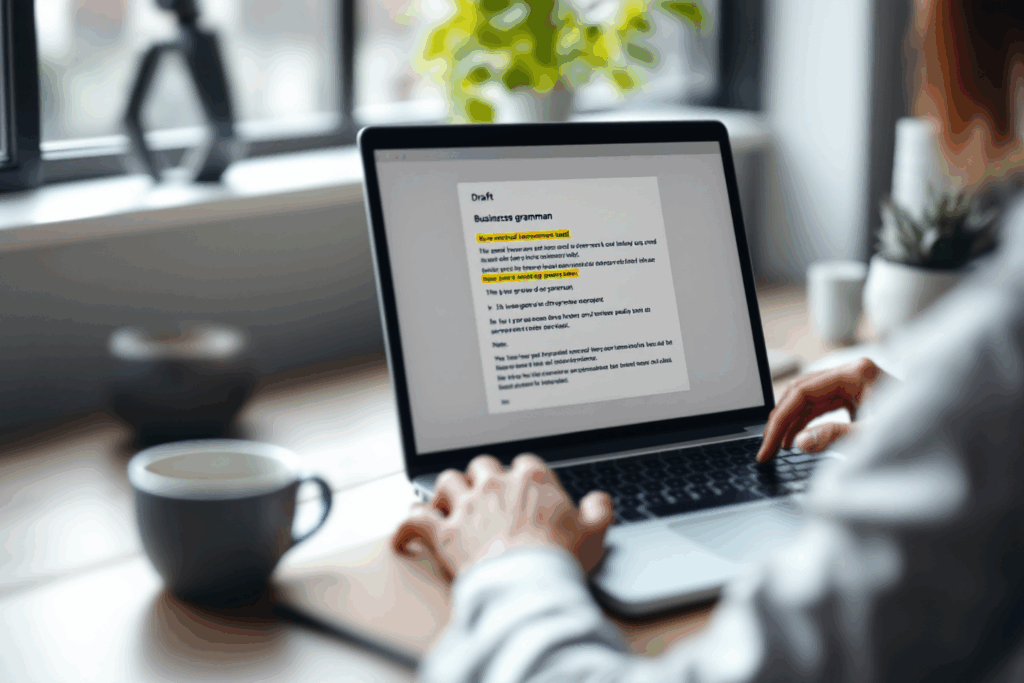


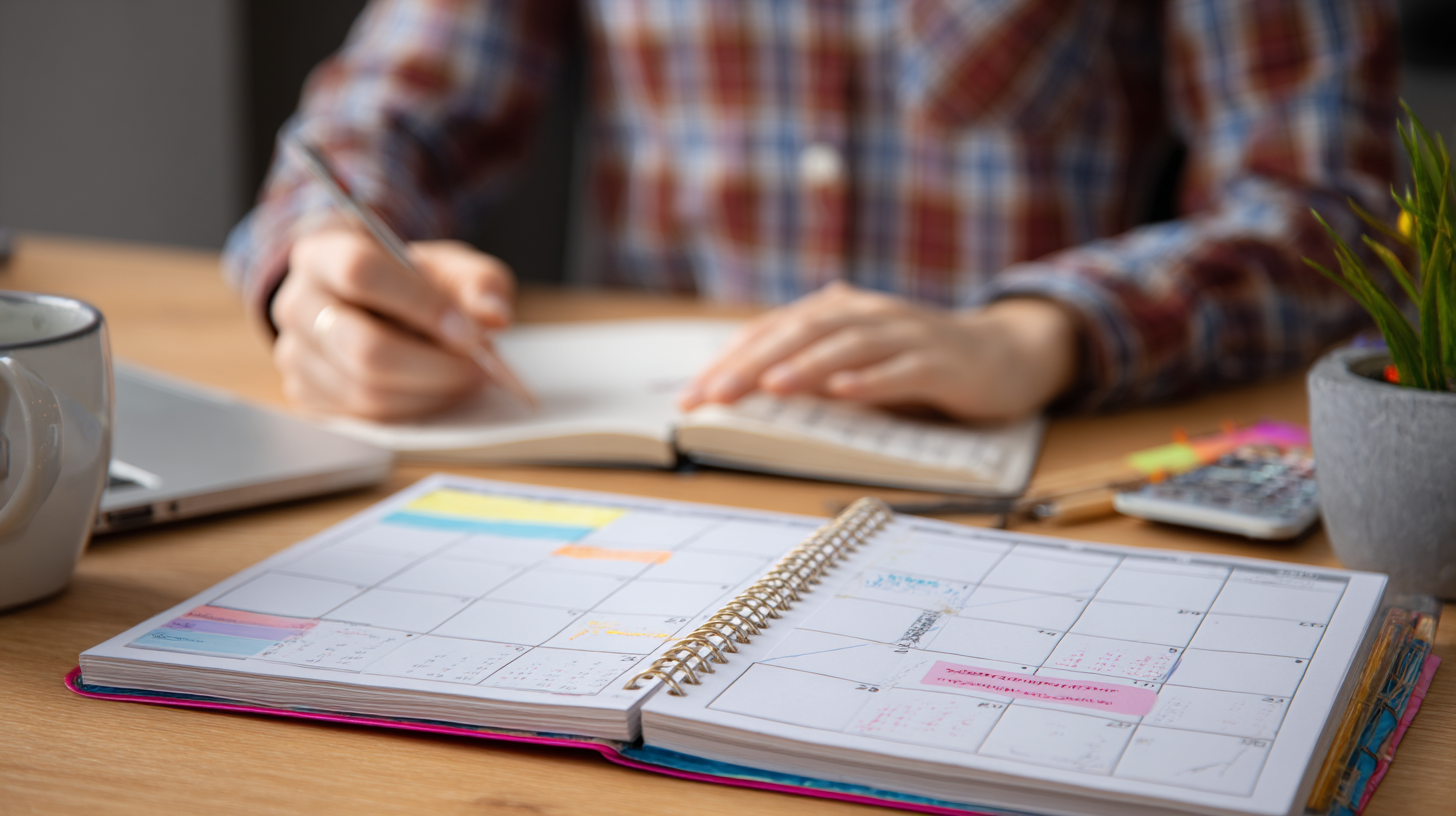














 Understanding the formation and basic structure of the future simple tense is crucial for discussing future plans and predictions. Its straightforward construction makes it a user-friendly tense for English learners. In the following sections, we will delve deeper into the various uses of the future simple tense, offering practical examples and tips to enhance your understanding and usage.
Understanding the formation and basic structure of the future simple tense is crucial for discussing future plans and predictions. Its straightforward construction makes it a user-friendly tense for English learners. In the following sections, we will delve deeper into the various uses of the future simple tense, offering practical examples and tips to enhance your understanding and usage.


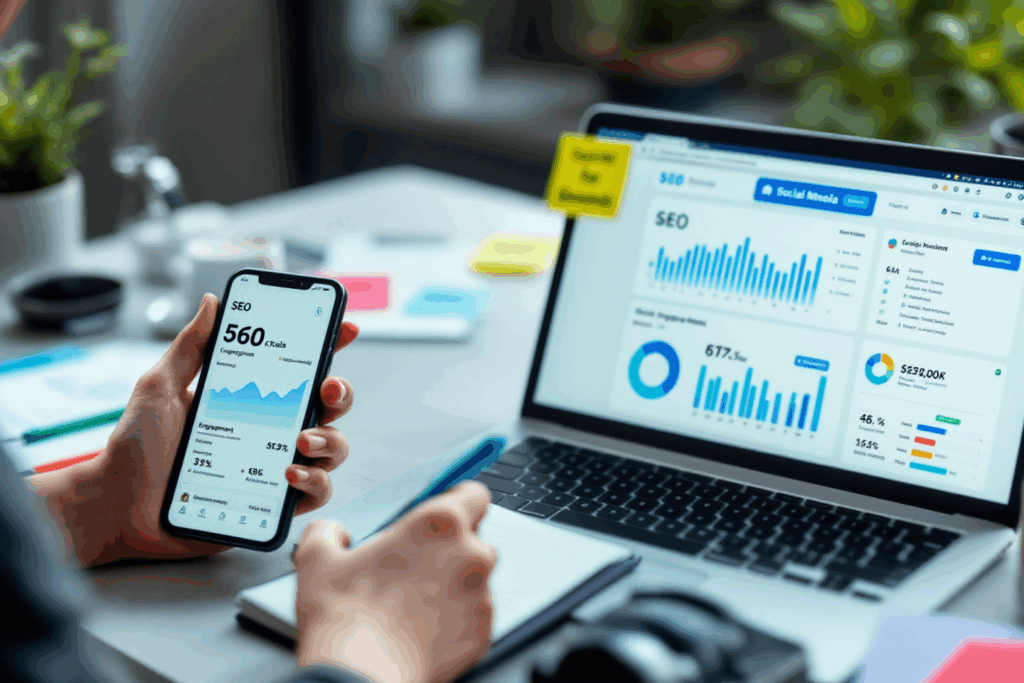



 The future simple tense, often formed with the auxiliary ‘will’, is a fundamental aspect of English grammar, pivotal for discussing future events, intentions, and predictions. Its mastery is crucial for anyone learning English, enabling clear and effective communication about what is yet to come. This tense allows speakers to convey plans, make predictions, and express promises or decisions made at the moment of speaking.
The future simple tense, often formed with the auxiliary ‘will’, is a fundamental aspect of English grammar, pivotal for discussing future events, intentions, and predictions. Its mastery is crucial for anyone learning English, enabling clear and effective communication about what is yet to come. This tense allows speakers to convey plans, make predictions, and express promises or decisions made at the moment of speaking. Understanding the future simple tense is essential for navigating daily conversations, professional communications, and even creative writing. It provides a framework for talking about the future, offering a way to articulate hopes, expectations, and plans. This tense is especially important in English because it helps to distinguish between different types of future occurrences, each with its nuances and implications.
Understanding the future simple tense is essential for navigating daily conversations, professional communications, and even creative writing. It provides a framework for talking about the future, offering a way to articulate hopes, expectations, and plans. This tense is especially important in English because it helps to distinguish between different types of future occurrences, each with its nuances and implications. For learners, particularly those from linguistic backgrounds with different methods of expressing future actions, mastering the future simple tense can be both challenging and rewarding. The key to its proper use lies in understanding not only its structure – ‘will’ followed by the base form of the verb – but also the contexts in which it is most appropriately used. Whether planning for upcoming events, making predictions, or making spontaneous decisions, the future simple tense is an indispensable tool.
For learners, particularly those from linguistic backgrounds with different methods of expressing future actions, mastering the future simple tense can be both challenging and rewarding. The key to its proper use lies in understanding not only its structure – ‘will’ followed by the base form of the verb – but also the contexts in which it is most appropriately used. Whether planning for upcoming events, making predictions, or making spontaneous decisions, the future simple tense is an indispensable tool. In this article, we will explore the nuances of the future simple tense, including its formation, common uses, and the distinctions in forming questions and negatives. We aim to provide a comprehensive guide that simplifies this aspect of English grammar, enriched with practical examples and tips, enabling learners to confidently and accurately use the future simple tense. By the end of this piece, readers will have gained a deeper understanding and improved ability to discuss future events, an essential skill in the journey towards English fluency.
In this article, we will explore the nuances of the future simple tense, including its formation, common uses, and the distinctions in forming questions and negatives. We aim to provide a comprehensive guide that simplifies this aspect of English grammar, enriched with practical examples and tips, enabling learners to confidently and accurately use the future simple tense. By the end of this piece, readers will have gained a deeper understanding and improved ability to discuss future events, an essential skill in the journey towards English fluency.


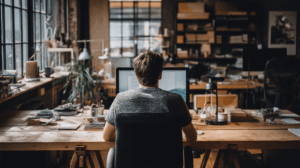 Narrating Past Events: Practice recounting events from your past, such as a memorable trip or a significant life event. This exercise helps in applying the past simple tense to real-life situations.
Narrating Past Events: Practice recounting events from your past, such as a memorable trip or a significant life event. This exercise helps in applying the past simple tense to real-life situations.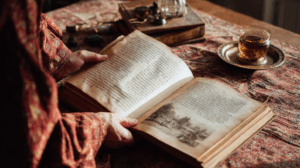 Reading and Analyzing: Read short stories or historical accounts, and identify the verbs in the past simple tense. Analyze how they are used to describe actions and events.
Reading and Analyzing: Read short stories or historical accounts, and identify the verbs in the past simple tense. Analyze how they are used to describe actions and events. Writing Exercises: Write about your typical day, but in the past tense. This can help you practice converting present actions into their past form, enhancing your understanding of the tense.
Writing Exercises: Write about your typical day, but in the past tense. This can help you practice converting present actions into their past form, enhancing your understanding of the tense. Journaling: Keep a journal where you write about your daily activities, but in the past tense. This practice helps in reinforcing the use of the tense in describing everyday events.
Journaling: Keep a journal where you write about your daily activities, but in the past tense. This practice helps in reinforcing the use of the tense in describing everyday events. Movie and Book Reviews: After watching a movie or reading a book, write a review in the past tense. Focus on describing the plot and characters using the past simple tense.
Movie and Book Reviews: After watching a movie or reading a book, write a review in the past tense. Focus on describing the plot and characters using the past simple tense. Expanding your practice of the past simple tense through diverse exercises, utilizing resources, and applying it in real-life contexts is key to achieving proficiency. These activities not only reinforce your understanding but also enhance your ability to use the tense naturally in conversation and writing.
Expanding your practice of the past simple tense through diverse exercises, utilizing resources, and applying it in real-life contexts is key to achieving proficiency. These activities not only reinforce your understanding but also enhance your ability to use the tense naturally in conversation and writing.


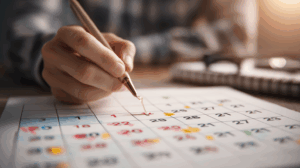 Specific Time in the Past: Use the past simple tense when referring to a specific time in the past, whether it’s yesterday, last week, in 2000, or a moment ago.
Specific Time in the Past: Use the past simple tense when referring to a specific time in the past, whether it’s yesterday, last week, in 2000, or a moment ago. Completed Actions: Remember, the past simple is ideal for actions that started and finished in the past.
Completed Actions: Remember, the past simple is ideal for actions that started and finished in the past. Past Habits: For habits or routines that happened in the past and no longer exist, the past simple tense is the correct choice.
Past Habits: For habits or routines that happened in the past and no longer exist, the past simple tense is the correct choice. Incorrect Verb Form: Regular verbs form their past tense by adding -ed, but watch out for irregular verbs, which have unique past forms.
Incorrect Verb Form: Regular verbs form their past tense by adding -ed, but watch out for irregular verbs, which have unique past forms. Overusing ‘Did’ in Affirmative Sentences: Remember, ‘did’ is used only in negative sentences and questions. Avoid using it in affirmative past simple sentences.
Overusing ‘Did’ in Affirmative Sentences: Remember, ‘did’ is used only in negative sentences and questions. Avoid using it in affirmative past simple sentences. Confusing Past Simple with Present Perfect: The past simple is used for completed actions in the past with a specific time reference, whereas the present perfect is used for actions that have relevance to the present or when the time is not specified.
Confusing Past Simple with Present Perfect: The past simple is used for completed actions in the past with a specific time reference, whereas the present perfect is used for actions that have relevance to the present or when the time is not specified. Consistent practice is the key to mastering the past simple tense. Engage in exercises like rewriting present tense sentences in the past tense, filling in the blanks with the correct past tense verbs, and narrating past events.
Consistent practice is the key to mastering the past simple tense. Engage in exercises like rewriting present tense sentences in the past tense, filling in the blanks with the correct past tense verbs, and narrating past events. Familiarize yourself with common irregular verbs and their past forms. Some frequently used irregular verbs include go (went), see (saw), and take (took).
Familiarize yourself with common irregular verbs and their past forms. Some frequently used irregular verbs include go (went), see (saw), and take (took).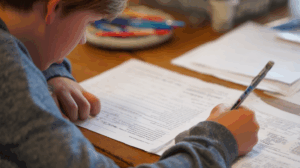 The past simple tense is a fundamental aspect of English grammar, essential for talking about past events. Understanding its proper use and common errors can significantly enhance your ability to narrate past experiences and actions accurately. Regular practice and attentiveness to these guidelines will improve your proficiency in using the past simple tense.
The past simple tense is a fundamental aspect of English grammar, essential for talking about past events. Understanding its proper use and common errors can significantly enhance your ability to narrate past experiences and actions accurately. Regular practice and attentiveness to these guidelines will improve your proficiency in using the past simple tense.

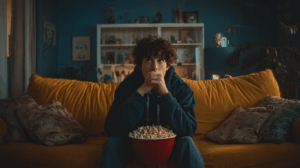







 Forming questions and negatives correctly in the past simple tense is crucial for conveying accurate and clear information about past events. By understanding and practicing these structures, you can greatly enhance your ability to communicate effectively in English, particularly when discussing past experiences or events.
Forming questions and negatives correctly in the past simple tense is crucial for conveying accurate and clear information about past events. By understanding and practicing these structures, you can greatly enhance your ability to communicate effectively in English, particularly when discussing past experiences or events.






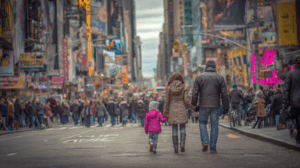




 The past simple tense is vital for discussing past events, habits, and general truths. Its ability to clearly communicate completed actions and past routines makes it an indispensable part of the English language. With practice, using the past simple tense becomes intuitive, allowing for effective and accurate descriptions of past experiences and events.
The past simple tense is vital for discussing past events, habits, and general truths. Its ability to clearly communicate completed actions and past routines makes it an indispensable part of the English language. With practice, using the past simple tense becomes intuitive, allowing for effective and accurate descriptions of past experiences and events.

 Video editing, once a skill reserved for professionals with high-end equipment, has become increasingly accessible to anyone with a passion for storytelling and a computer. In this digital age, the ability to edit videos has transformed from a niche technical skill to a versatile tool in everyone’s creative arsenal. Whether you’re aspiring to be a filmmaker, looking to enhance your social media presence, or simply wanting to preserve memories in a more engaging format, learning video editing opens up a world of possibilities.
Video editing, once a skill reserved for professionals with high-end equipment, has become increasingly accessible to anyone with a passion for storytelling and a computer. In this digital age, the ability to edit videos has transformed from a niche technical skill to a versatile tool in everyone’s creative arsenal. Whether you’re aspiring to be a filmmaker, looking to enhance your social media presence, or simply wanting to preserve memories in a more engaging format, learning video editing opens up a world of possibilities.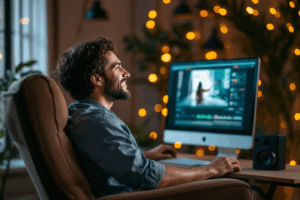 As we dive into this beginner’s guide, remember that everyone starts somewhere. With the advent of free, user-friendly video editing tools, you no longer need expensive software to begin your journey into the art of video editing. This guide aims to demystify the process, introduce you to basic techniques, and help you take your first steps in creating compelling video content.
As we dive into this beginner’s guide, remember that everyone starts somewhere. With the advent of free, user-friendly video editing tools, you no longer need expensive software to begin your journey into the art of video editing. This guide aims to demystify the process, introduce you to basic techniques, and help you take your first steps in creating compelling video content.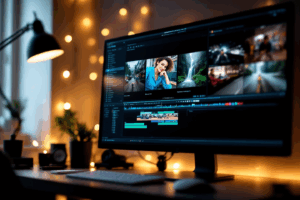



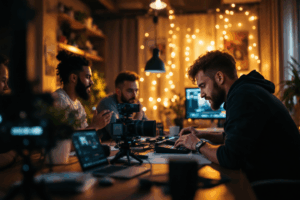
 Before you dive into the practical side of video editing, it’s essential to grasp some fundamental concepts. These basics form the foundation upon which all your editing skills will be built:
Before you dive into the practical side of video editing, it’s essential to grasp some fundamental concepts. These basics form the foundation upon which all your editing skills will be built: Remember, the goal of editing is not just about putting clips together but telling a story that engages your audience. As you start experimenting with these basic elements, your unique style and storytelling techniques will begin to emerge.
Remember, the goal of editing is not just about putting clips together but telling a story that engages your audience. As you start experimenting with these basic elements, your unique style and storytelling techniques will begin to emerge.
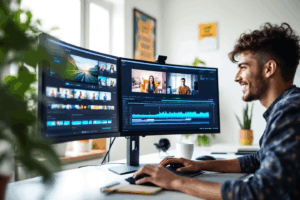
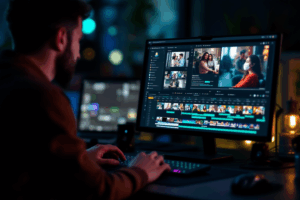







 As we reach the end of this beginner’s guide to video editing, remember that your journey is just beginning. Video editing is not only about mastering software or techniques; it’s about discovering your voice and telling stories in your unique way. The satisfaction of creating something that resonates with others is unparalleled, and every video you edit brings you one step closer to this achievement.
As we reach the end of this beginner’s guide to video editing, remember that your journey is just beginning. Video editing is not only about mastering software or techniques; it’s about discovering your voice and telling stories in your unique way. The satisfaction of creating something that resonates with others is unparalleled, and every video you edit brings you one step closer to this achievement. We encourage you to take the first step today. Download a video editing software, gather some clips, and start playing around. There’s no better way to learn than by doing, and who knows where this journey might take you?
We encourage you to take the first step today. Download a video editing software, gather some clips, and start playing around. There’s no better way to learn than by doing, and who knows where this journey might take you?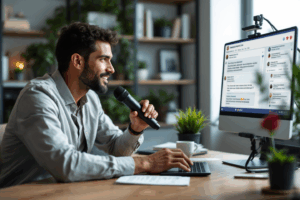



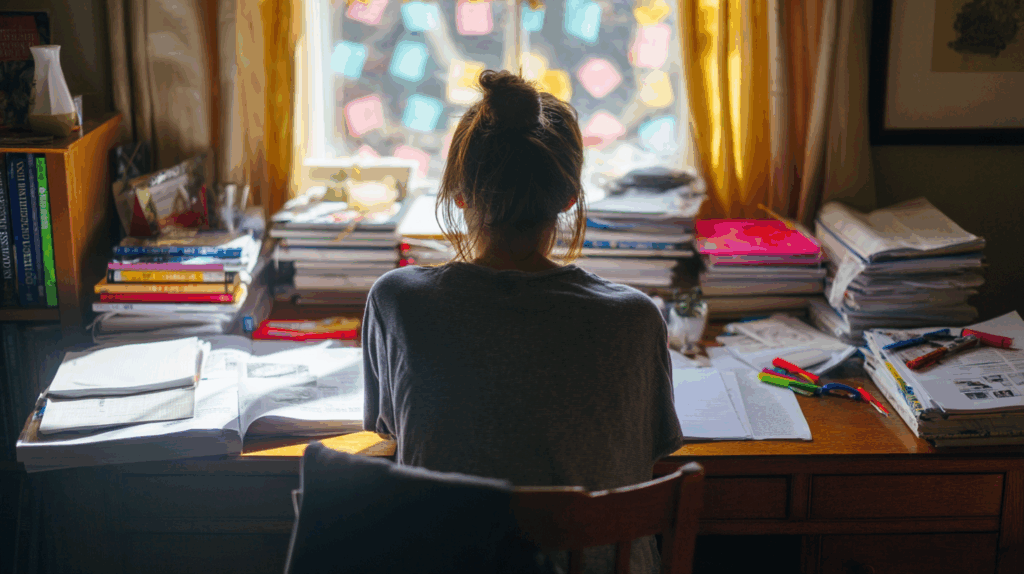
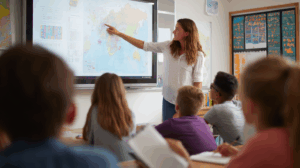 The past simple tense is primarily used to talk about actions or events that were completed in the past. It is one of the most commonly used tenses in English, essential for discussing history, telling stories, or even sharing what you did yesterday.
The past simple tense is primarily used to talk about actions or events that were completed in the past. It is one of the most commonly used tenses in English, essential for discussing history, telling stories, or even sharing what you did yesterday.








 Understanding the formation and basic rules of the past simple tense is crucial for accurately discussing past events. This tense is a key component of effective communication in English, providing a clear and straightforward way to talk about completed actions. In the following sections, we will delve deeper into the uses of the past simple tense, offering insights and examples to enhance your understanding and usage.
Understanding the formation and basic rules of the past simple tense is crucial for accurately discussing past events. This tense is a key component of effective communication in English, providing a clear and straightforward way to talk about completed actions. In the following sections, we will delve deeper into the uses of the past simple tense, offering insights and examples to enhance your understanding and usage.

 The past simple tense is a fundamental aspect of English grammar, playing a crucial role in narrating past events and experiences. Its mastery is essential for anyone learning English, as it provides the means to recount stories, describe completed actions, and express past habits and generalizations. This tense forms the backbone of historical storytelling and is indispensable in both everyday conversation and written language.
The past simple tense is a fundamental aspect of English grammar, playing a crucial role in narrating past events and experiences. Its mastery is essential for anyone learning English, as it provides the means to recount stories, describe completed actions, and express past habits and generalizations. This tense forms the backbone of historical storytelling and is indispensable in both everyday conversation and written language. For learners of English, particularly those from language backgrounds with different approaches to expressing time, the past simple tense can present unique challenges. Its proper use involves not only memorizing the past forms of verbs – both regular and irregular – but also understanding the contexts in which this tense is appropriately employed. This can be a significant step in overcoming language barriers and gaining proficiency in English.
For learners of English, particularly those from language backgrounds with different approaches to expressing time, the past simple tense can present unique challenges. Its proper use involves not only memorizing the past forms of verbs – both regular and irregular – but also understanding the contexts in which this tense is appropriately employed. This can be a significant step in overcoming language barriers and gaining proficiency in English. In this article, we will explore the intricacies of the past simple tense, including its formation, uses, and the nuances of creating questions and negative sentences. We aim to provide a comprehensive guide enriched with practical examples and tips, enabling learners to confidently and accurately use the past simple tense. By the end of this piece, readers will have a deeper understanding and enhanced ability to recount past events and express themselves in the past tense, a vital skill in the journey towards English fluency.
In this article, we will explore the intricacies of the past simple tense, including its formation, uses, and the nuances of creating questions and negative sentences. We aim to provide a comprehensive guide enriched with practical examples and tips, enabling learners to confidently and accurately use the past simple tense. By the end of this piece, readers will have a deeper understanding and enhanced ability to recount past events and express themselves in the past tense, a vital skill in the journey towards English fluency.